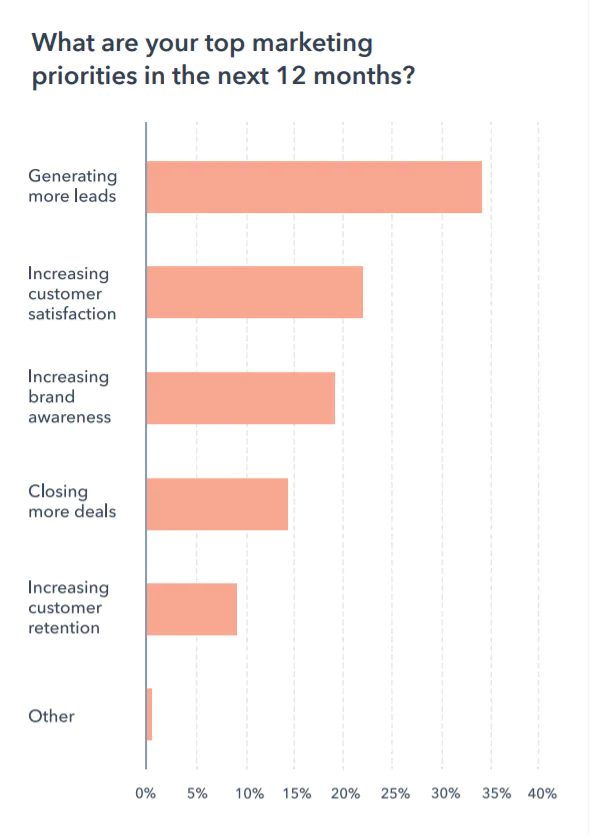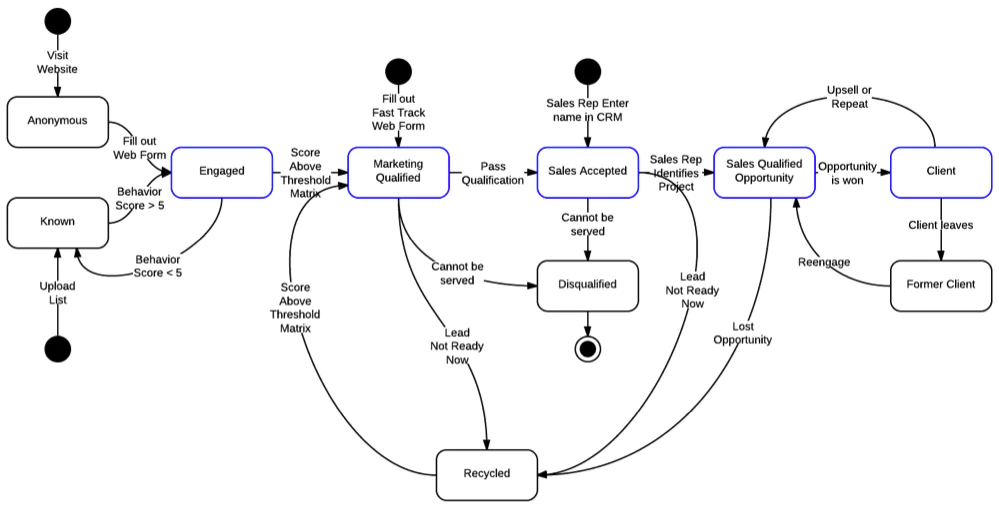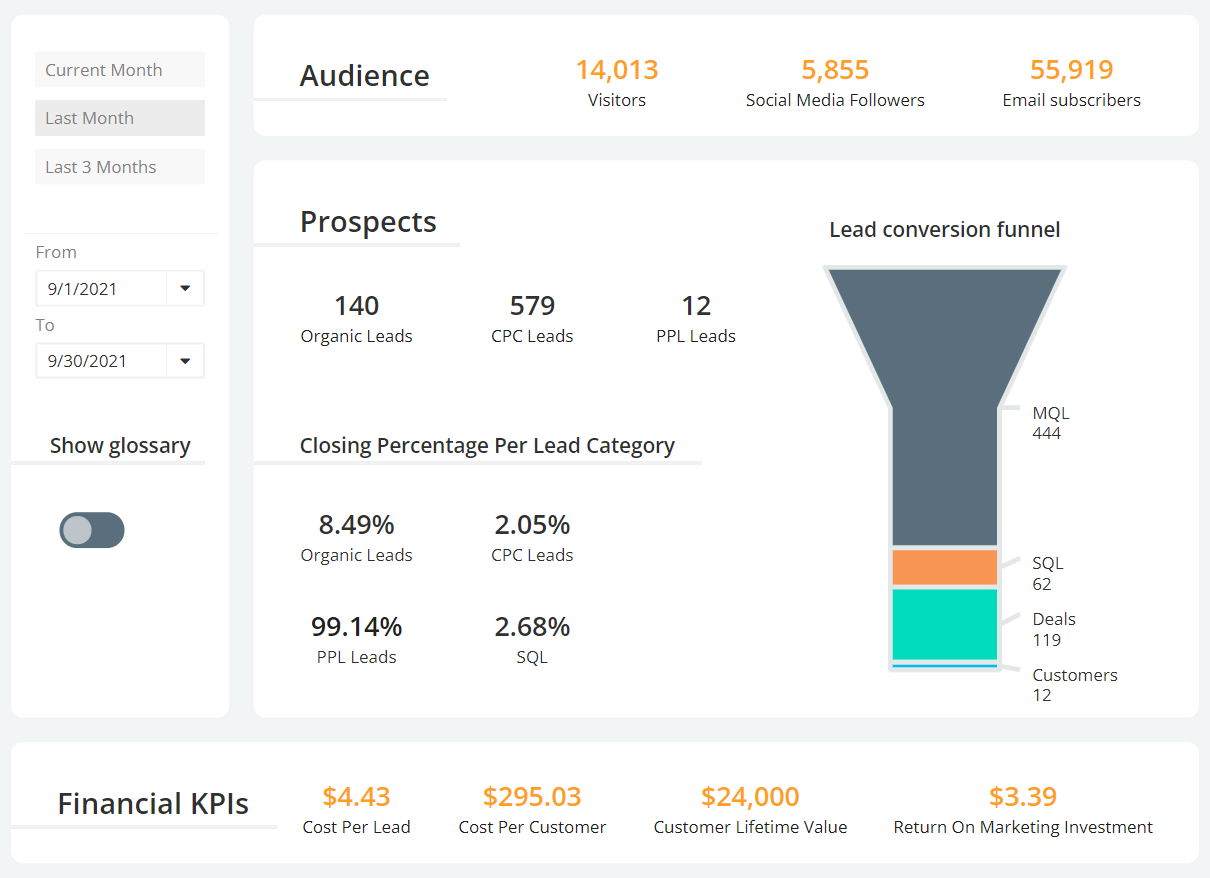When it comes to sales, most businesses get very focused on the bottom of the funnel: the conversion phase. Many sales professionals will argue that closing the deal is the most challenging part of their jobs. However, bringing targeted leads into the funnel is actually the bigger challenge when you get down to it.
The wider the net you cast at the top of your sales funnel, the more leads you will have to convert. But finding verified leads who are actually in your target audience can be quite challenging. According to the Not Another State of Marketing Report from HubSpot, lead generation remains a top priority for marketers (so cut them some slack, dear salespeople).

Source: HubSpot
That said, only 18% of marketing teams believed that their outbound strategies successfully drew in leads.
So why are so many businesses failing at effective lead generation?
One leading reason is that the end goal isn’t visible to everyone at all times – so many sales and marketing teams don’t have a common view of the revenue model. Typically, both teams try out new strategies and see what sticks. They aren’t able to track results accurately, don’t gather data on customer history or past interactions, and have difficulty integrating data from multiple sources. This leads to a confusing generation system that does not yield results.
Creating a “lead to revenue” model helps to alleviate this challenge so sales teams can easily nurture leads through to conversion. Here’s exactly how to do it the right way.
Key Takeaways:
- Sales-marketing alignment is the key to generating, nurturing, and converting leads.
- Make sure both sales and marketing teams understand your lead management process and workflow.
- Use CRM, marketing automation, and sales engagement tools to their fullest. Don’t forget analytics.
It Starts with Unifying All Departments
A lack of communication between teams is always going to stand in the way of success. Again, many businesses fall short here, often due to organizational structure issues or a simple lack of leadership. Sadly, 86% of employees blamed their company’s poor collaboration and communication systems as the reason for poor results.
It is important to first ensure that your company’s teams all have a way to successfully communicate goals and collaborate on strategies. This is particularly important for sales, marketing, and customer service departments, as they have the most direct interactions with leads.
There needs to be a unified front for important aspects of the sales journey, from the lead generation process to brand voice and the overall customer experience. Unfortunately, this is often not the case in most organizations – sales and marketing departments often feel like they are on two different pages.
All teams should work together to form a lead to revenue model and design actionable systems to resolve this issue. Of course, take the organizational structure of your company into account. This will need to look different for brands who well through dealerships or stores compared to franchise networks.
Define and Automate the Step by Step Process
Creating a clear customer journey map is critical so that every team has a guideline to follow and design strategies around. But the key thing to keep in mind here is to base your revenue model on robust data. Further, your model should not be linear; you have to account for personalized journeys and tailor experiences based on behavior.
Source: Marketing Rockstar Guides
Automating your marketing strategy is the only way to implement such a personalized revenue model successfully. Using sales and marketing automation will help you design processes based on KPIs, such as customer behavior or lead source. The goal is to create a repeatable system so every lead is nurtured and no one falls through the cracks.
Be sure that you also clarify and fine-tune the lead management process specifically. Finding qualified leads is difficult – and there need to be clear systems in place to define how your leads are scored and qualified, how they are handed off from marketing to sales, and what steps sales reps must take to follow up with leads and nurture them to conversion.
Use a Sales Engagement Platform that Supports Your Model
A Sales Engagement Platform (SEP) is a unified interface that helps sales team plan, manage, optimize, and track customer interactions across multiple channels. It is a highly integrative platform that enhances workflows across your CRM and communication tools and enables different teams to quickly share and access important customer data.
There are many types of SEPs out there – you need to find a lean and efficient platform that will support your sales, marketing, and customer service teams. Look out for key features such as:
- Real-time databases that can store and organize important customer data
- Built-in analytics reports
- Multi-tool integration to work with other sales and marketing platforms
- Lead management capabilities
- Communication support for multiple lead generation strategies, such as email, voice, SMS, and social media posts
Management and team leaders need to make sure their teams are properly trained to use tools like SEPs to their fullest potential. These programs can be incredibly powerful when sales and marketing teams know how to navigate and implement all of the features.
Track and Adjust as Needed
As with any good strategy, there has to be room for adjustments and improvements. Your model should never be set in stone; it has to be changed to accommodate for changing factors, like audience preferences or new consumer opportunities.
The only way to discover weaknesses or areas with room for improvement is by careful tracking of sales, revenue, and lead performance data. KPIs like conversion rate per channel, lead qualification ratios, sales cycle length, and customer lifetime value can shed a light on the true success of your systems.
Source: ClicData
Over to You
Creating and implementing a truly effective lead to revenue model – especially one that garners active participation from OEMs, dealers, vendors, and other stakeholders – requires a lot of planning, practice, and support. A lot many people and departments need to collaborate together to define processes and systems that can be implemented over and over again towards the desired outcome.
But the only way to make sure that a revenue model can truly work is with the right tools to support every team member. Our goal at MXTR Automation is to solve the most common issues that slow down the lead conversion process by enabling continuous consumer engagement via a single platform.
Do you want end-to-end visibility into the journey of your leads? Do you want to get your sales and marketing teams working together across multiple locations? See how our platform can help with all of these!
Featured image: Pexels







